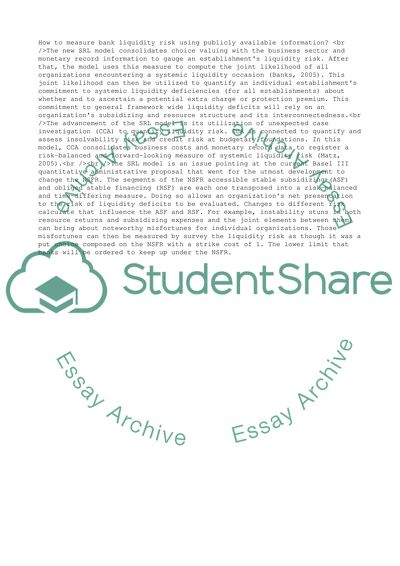Cite this document
(Liquidity Risk and Syndicate Structure Assignment, n.d.)
Liquidity Risk and Syndicate Structure Assignment. Retrieved from https://studentshare.org/business/1848685-1how-to-measure-bank-liquidity-risk-using-publicly-available-information-2discuss-the-relationship-between-bank-liquidity-risk-and-bank-stock-returns
Liquidity Risk and Syndicate Structure Assignment. Retrieved from https://studentshare.org/business/1848685-1how-to-measure-bank-liquidity-risk-using-publicly-available-information-2discuss-the-relationship-between-bank-liquidity-risk-and-bank-stock-returns
(Liquidity Risk and Syndicate Structure Assignment)
Liquidity Risk and Syndicate Structure Assignment. https://studentshare.org/business/1848685-1how-to-measure-bank-liquidity-risk-using-publicly-available-information-2discuss-the-relationship-between-bank-liquidity-risk-and-bank-stock-returns.
Liquidity Risk and Syndicate Structure Assignment. https://studentshare.org/business/1848685-1how-to-measure-bank-liquidity-risk-using-publicly-available-information-2discuss-the-relationship-between-bank-liquidity-risk-and-bank-stock-returns.
“Liquidity Risk and Syndicate Structure Assignment”. https://studentshare.org/business/1848685-1how-to-measure-bank-liquidity-risk-using-publicly-available-information-2discuss-the-relationship-between-bank-liquidity-risk-and-bank-stock-returns.


